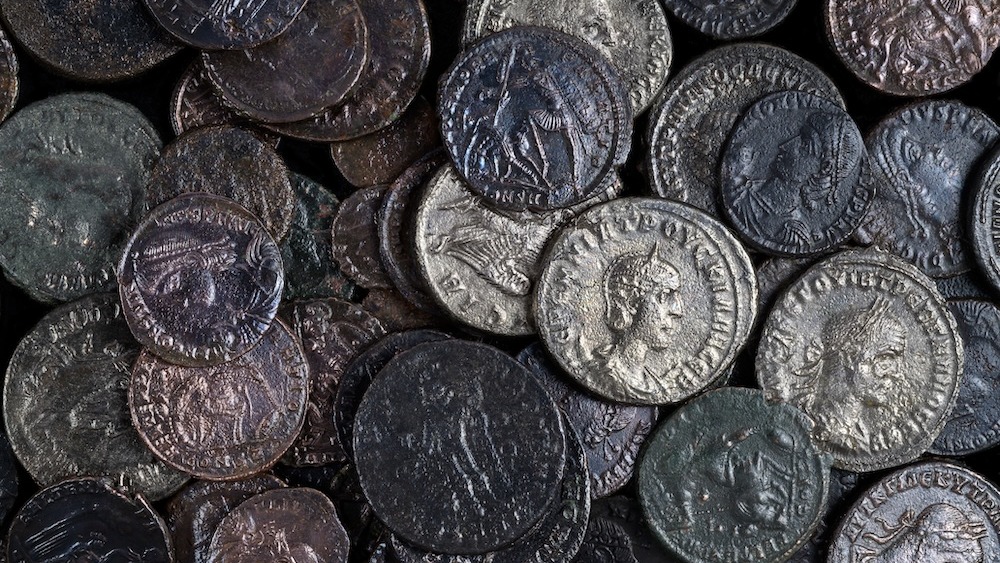
A hoard of 1,700-year-old coins found in Israel provides new evidence about the last known Jewish revolt against Roman rule.
Archaeologists found the hidden coins while conducting excavations inside the remains of a newly discovered public building dating to the Late Roman-Early Byzantine period in Lod (also known as Lydda), a city in what is now central Israel that the Romans renamed "Diospolis," according to a statement from the Israel Antiquities Authority (IAA).
Despite the building having "suffered violent destruction" at the time of the revolt, its surviving foundation protected 94 silver and bronze coins dating to between A.D. 221 and 354. Whoever's stash it was, they likely "deliberately placed" it inside the building in hopes of returning to collect it when the situation calmed down, according to the statement.
"This is essentially an emergency hoard, meaning a hoard that people hide in anticipation of a catastrophic event," Mor Viezel, an excavator with the IAA, said in a translated video.
Many of the coins were struck during the Gallus Revolt (A.D. 351 to 354), a tumultuous time when Jews rebelled against the rule of Flavius Claudius Constantius Gallus, the half-nephew of Constantine the Great (the first Roman emperor to convert to Christianity) and ruler of the Roman Empire's eastern provinces at the time. Lod was just one of several Jewish communities that revolted as the Romans "burned and destroyed" several cities' buildings, according to the video.
Related: 1,900-year-old coins from Jewish revolt against the Romans discovered in the Judean desert
Other cities that were attacked include Tiberias and Sepphoris, Viezel added. By the time of the Gallus Revolt, Jews in Judaea had been revolting against Roman rule for hundreds of years. During the First Jewish-Roman War (A.D. 66 to 70), the Romans destroyed the Second Temple, and later during the Bar Kokhba Revolt (A.D. 132 to 135), the Romans crushed the Jewish resistance that was fighting for an independent state.

"This building, destroyed down to its very foundation, is a clear indication that the revolt was forcefully put down with violence and cruelty, and was not simply a local uprising event as some earlier studies contended," IAA excavator Shahar Krispin and Viezel said in the statement. "From Talmudic writings we know that Lod was a most significant [Jewish] center in the aftermath of the Second Temple's destruction in Jerusalem."
In addition to the coins, researchers found "impressive stone and marble artifacts" containing Greek, Hebrew and Latin inscriptions. One item, which is currently being studied further, mentions the name of "a Jewish man from a priestly family."
However, it's unclear how Jews used the building before it was destroyed in the revolt. "It is difficult to determine if this magnificent building served as [a] synagogue, study hall, meeting hall of the elders or all three of these functions as one," Joshua Schwartz, a professor and chair of the IAA, said in the statement.
The findings will be presented at the Central Israel Region Archaeological Conference in Tel Aviv on June 20.







